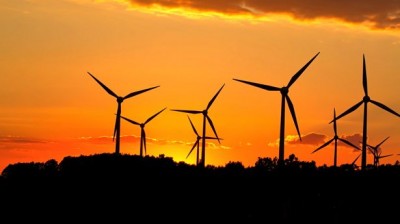Warring Against Windmills: Australia’s Renewable Energy Policy

Stone age politics continues its creaky, inscrutable way in Canberra, with the Australian Prime Minister keen to show his acute lack of understanding about the renewable energy sector. One wonders whether he believes in its existence at all. On this occasion, Tony Abbott decided that even his energy minister, Greg Hunt, wasn’t to feature in his decision on whether the Clean Energy Finance Corporation should continue to fund wind related projects.
To date, the CEFC has been responsible for providing $300 million to wind energy projects, with its investment portfolio being 33 percent solar, 30 percent energy efficiency, 21 percent wind and 16 percent miscellaneous technologies.
Already recoiling from the government’s Renewable Energy Target review, the wind energy sector has received another battering in Australia. In May, the opposition Labor party decided, in its wisdom, to cosy up to the government on slashing the RET from 41,000 to 33,000 gigawatt hours by 2020, though the process did take 18 months. One the one hand, analysts speculate that up to $8.7 billion will be invested over the next five years in the industry, a figure that is bound to plummet with Abbott at the helm.
Showing that renewable energy tends to feature a distant second in his estimates, treasurer Joe Hockey got busy last year attacking wind farms as “utterly offensive” and “visually awful” suggesting that aesthetics in the energy sector, odd as it seems, does count.[1] “I think they’re a blight on the landscape.”
An ever eager listener to this vacuous line of reasoning has been the reactionary shock jock by the name of Alan Jones, who believes that those living near wind turbines have become martyrs of green cruelty. They were no less than “refugees in their own homes”. Jones, happy to dip into the world of pseudo-science, suggested that, if such turbines did not affect health, “put them on Parliament House, put them on Macquarie Street, but them on Parramatta Road.” Hurrah for dirty coal powered stations.
Abbott has similarly expressed his distaste for wind turbines, showing that the viscera of personal politics tends to prevail over constructive policy. Coal remains in its divine robes in Abbott’s valley, but renewable energy in the form of wind can only violate the senses.
Last month, the prime minister went further by suggesting that there were potential health issues arising from them. “I do take your point,” he explained, again to Abbott courtier Alan Jones, “about the potential health impact of these things… when I’ve been up close to these windfarms not only are they visually awful but they make a lot of noise” (The Guardian,Jun 11).
He continued to explain that much homework on his part had been done to sabotage “these things that we are going to get in the future”. Reduction in their numbers was deemed an essential policy, and one that was only being frustrated by those politicians on the other side of the aisle.
The faux aesthetics is a curious turn to take, not least because much about energy generation is eye wateringly ugly. Power stations tend to be the sores of human energy consumption, and the La Trobe and Hunter Valleys are replete with them. AsThe Ageeconomics editor, Peter Martin, would observe, “it takes a special kind of hysteria to get worked up over windmills. Or a special sense of entitlement.”[2]
The science bods in the acoustic sector have come up with a different conclusion, looking at a range of noise and electromagnetic parameters. Even the government’s own National Health and Medical Research Council has found no “consistent evidence” that wind farms pose such a grave threat to humans, though its February statement admits that there were “limitations of the existing evidence” that required further study.[3]
Abbott was having nothing of it, refusing to accept the findings. He remains one of the world’s foremost advocates of emissions and the mining industry, continuing tilting at illusions in his anti-windmill crusade. With true Quixotic stupidity, he had exaggerated the threat even as he was charging at it.
Energy minister Hunt, however, has been caught off guard by the troika of Abbott, Hockey and the government’s reliable storm trooping finance minister Mathias Cormann. He had, after all, offered a fig leaf to the energy sector, assuring a “significantly increased uptake of large scale solar” while also appointing a new wind farm commissioner to manage complaints issuing from turbine noise. Even such baby steps suggested something was being done.
The logical target in reducing funding to the wind energy sector has been the CEFC, as oddly named as any entity that requires a stated purpose to be plastered across it. The very fact that it has “clean” in its title suggests that the major focus of Australia’s energy generation tends to be “dirty”. This has proven to be far more than an idle threat on the part of the Abbott government to the environment. It has, in fact, proven to be a fundamental mission. Entitlement comes first.
Dr. Binoy Kampmark was a Commonwealth Scholar at Selwyn College, Cambridge. He lectures at RMIT University, Melbourne. Email:[email protected]
Notes
[3] https://www.nhmrc.gov.au/

